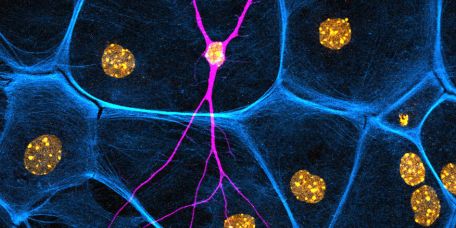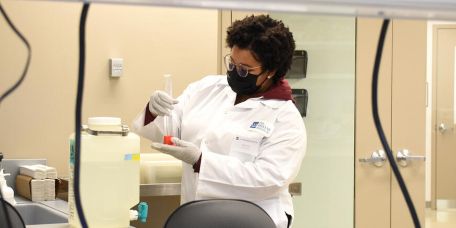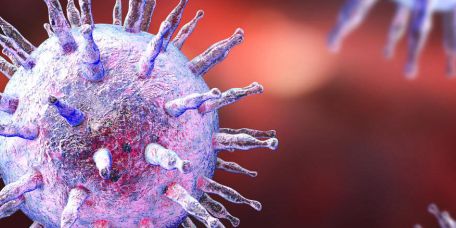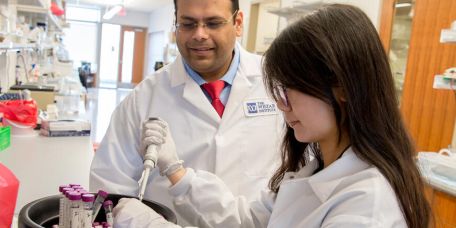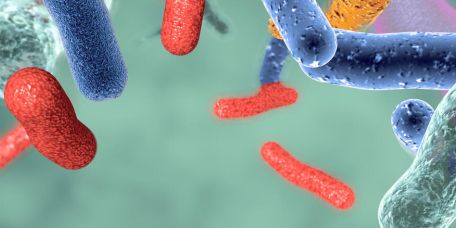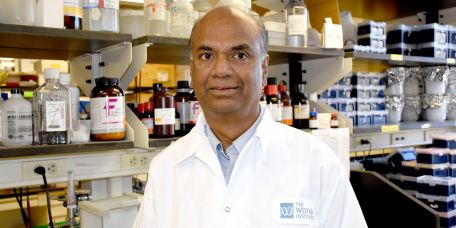The Wistar Institute
A Virtual Glimpse Into Microscopic Life
Restrictions due to the COVID-19 pandemic didn’t stop Wistar from keeping up with a long-standing tradition that, for the past 18 years until this year, has brought hundreds of people to the Institute to marvel at the beauty of the microscopic world…
A Gene That Shields Our Skin From the Damages of UV Rays
Dr. Chengyu Liang, who joined the Wistar faculty in July 2020, leads an exciting research program that investigates fundamental cellular processes in the context of infectious disease and cancer, with particular focus on melanoma. Her lab studies…
Wistar Welcomes Cheyney University Students
On Feb. 4, Wistar welcomed eight students from Cheyney University that will take a Biomedical Research Methods course especially developed for their training as part of the Wistar-Cheyney collaboration launched to expand life science research educat…
The Bacteria Whisperer: Bacterial Chatter and Antibiotic Resistance
Antibiotic-resistant bacteria keep Dr. Bonnie Bassler up at night. The Princeton molecular biologist who made groundbreaking discoveries demonstrating that bacteria communicate and orchestrate group behaviors has dedicated her life to unraveling how…
Latest Wistar Discoveries
Despite dramatic progress in cancer therapy, long-term survival is hindered when cancer returns. Tumor cells that escape initial treatment can travel to distant sites in the body and remain hidden there silently for years. If these “dormant” ce…
Immuno-antibiotics: A New Frontier in the Fight Against Antimicrobial Resistance
Have you ever taken antibiotics for a sore throat and ended the treatment as soon as the symptoms disappeared and without finishing the course of medicine? This is a common mistake many of us have made and just one example of the many antibioti…
In Severe COVID-19, What Happens in the Gut Doesn’t Stay in the Gut
Shortly after the pandemic began, when doctors and scientists knew little to nothing about the novel coronavirus that has been sweeping across the globe for almost a year now, one thing became clear quickly: people who get severely ill or die of&nbs…
Wistar Scientists Make Pivotal Discovery on the Mechanism of Epstein-Barr Virus Latent Infection
PHILADELPHIA — (Jan. 21, 2021) — Researchers at The Wistar Institute have discovered a new enzymatic function of the Epstein-Barr Virus (EBV) protein EBNA1, a critical factor in EBV’s ability to transform human cells and cause cancer. Published in C…
New Insights Into the Control of Inflammation
PHILADELPHIA — (Jan. 13, 2021) — Scientists at The Wistar Institute discovered that Early Growth Response 1 (EGR1), a protein that turns on and off specific genes during blood cell development, inhibits expression of pro-inflammatory genes in macrop…
Wistar Researchers Develop New Humanized Mouse Model That Provides Insight Into Immunotherapy Resistance
PHILADELPHIA — (Jan. 12, 2021) — Scientists at The Wistar Institute have created an advanced humanized immune system mouse model that allows them to examine resistance to immune checkpoint blockade therapies in melanoma. It has revealed a central ro…
